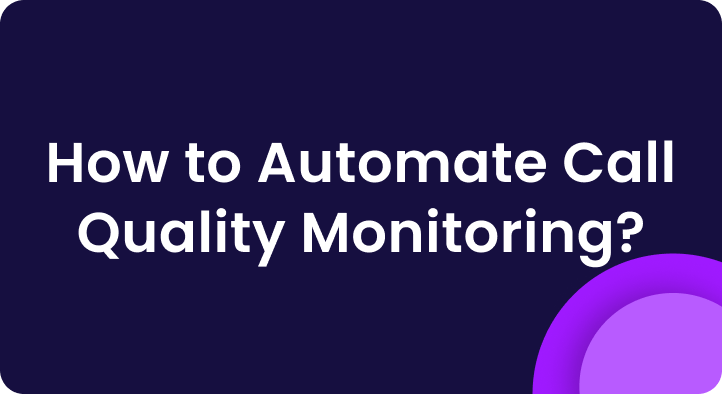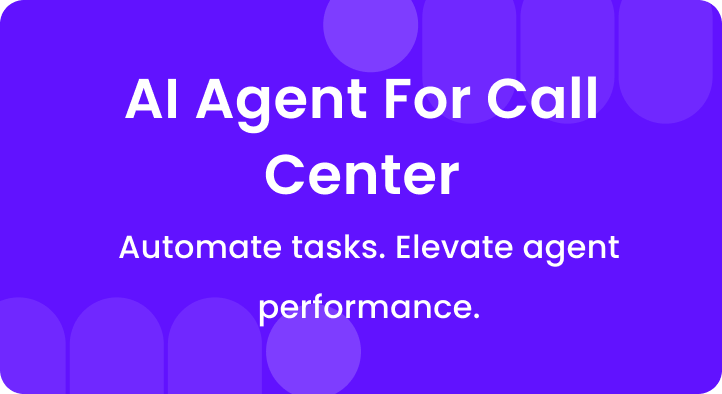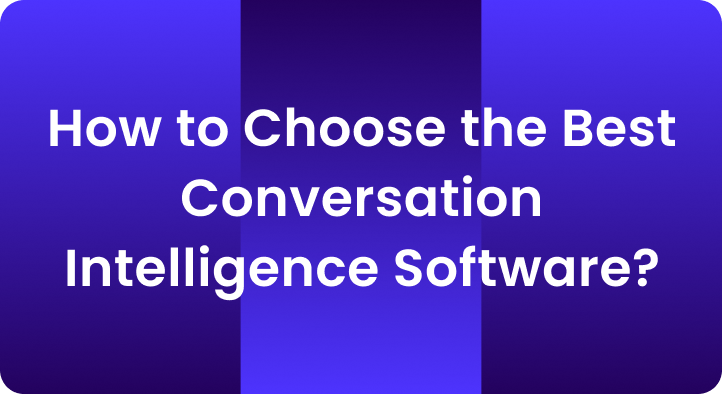If you run a call center, you already know – quality is everything.
Customers don’t care about your average handle time or your staffing model. What they remember is how that conversation made them feel.
One great call can turn a frustrated customer into a fan. One bad call? It can undo months of goodwill.
That’s the weight agents carry every day. And the truth is, improving quality isn’t just about telling agents to “do better.”
It’s about systems, coaching, and a culture that supports them. So how do you actually raise the bar? Let’s break it down.
Start with clear standards
Imagine sending a basketball team onto the court without telling them what counts as a foul or how many points a basket is worth. That’s what it feels like when agents don’t have clear standards.
You need a simple, transparent way of showing what “good” looks like. Most call centers use QA scorecards for this. They usually cover things like:
- How the greeting was handled
- Tone and empathy
- Was the issue solved correctly and quickly?
- Did the agent follow compliance rules?
Here’s the catch – those scorecards can’t just sit in a binder or on some forgotten drive.
They have to show up in training, coaching, and feedback conversations. And they should line up with what the business cares about.
A financial services team will weigh compliance more heavily, while an e-commerce support team might put more emphasis on first-call resolution and empathy.
When agents actually see what matters-and evaluators score them on the same scale-you get consistency.
Don’t just sample, actually monitor
Most centers review 2% – 5% of calls. Think about that. Would you trust 2% of customer surveys to tell you how your entire business is doing? Probably not.
Yet that’s the reality of manual QA. You listen to a random handful of calls, make notes, and hope it represents the whole team. Spoiler: it usually doesn’t.
Consistent monitoring is where real improvement starts. And it shouldn’t just be about catching mistakes.
Highlight the calls where agents nailed it-where they handled a tough customer with patience or explained something so clearly the customer said, “Thanks, that actually makes sense now.”
Sharing those moments gives everyone a model to follow.
And don’t forget: quality isn’t just phone calls anymore. Customers are on chat, email, and even social media. If you’re only looking at one channel, you’re missing half the story.
Automate what you can
Let’s be real-manual QA just doesn’t scale. Even the sharpest evaluator can only listen to so many calls in a day. That’s why most centers stick with small samples. But small samples mean blind spots.
Automation fixes this. With AI-powered QA, you can review every single interaction instead of a tiny slice. That means:
- Compliance issues get flagged instantly
- Customer sentiment is tracked across the board
- You start spotting patterns humans could never see at scale
Does this mean you don’t need humans? Not at all. Automation handles the grunt work of scoring, flagging, and categorizing.
Humans still do the coaching, the judgment calls, and the “why” analysis. It’s like having an assistant who never sleeps and catches things you’d miss.
Make coaching a habit, not an event
Here’s something I’ve seen a lot: agents get a burst of training when they start, then maybe a big review once or twice a year. That’s not enough. You don’t get fit by going to the gym twice a year. Same idea.
Coaching works best when it’s small, frequent, and specific. Instead of saying, “You need to show more empathy,” play back a call and pause at the exact moment where empathy would’ve changed the outcome. Instead of waiting three months, do it this week while the call is fresh.
The best sessions:
- Use real calls as teaching tools
- Balance positives with “here’s what to tweak
- Give agents a clear next step they can try immediately
One supervisor I spoke with put it this way: “Coaching is like course-correcting a car. You don’t wait until you’re in the ditch-you nudge the wheel before you drift too far.”
Measure what matters
You can’t manage quality by gut feeling. You need data. But here’s the mistake I see-leaders obsess over the wrong numbers.
Yes, Average Handle Time (AHT) is useful. But if agents rush customers off the phone just to keep calls short, your CSAT will tank. Balance is everything.
The metrics that usually matter most are:
- Customer Satisfaction (CSAT)
- First Call Resolution (FCR)
- Compliance adherence
- Net Promoter Score (NPS)
- AHT (but only paired with satisfaction)
When you track these consistently, you can see whether coaching and process changes are paying off-or if you’re just moving numbers around.
Feedback that empowers, not punishes
Nobody likes feeling judged. If feedback only shows up as a list of mistakes, agents tune it out. The goal is to make feedback something they actually want to use.
That means:
- Share QA results openly so they know where they stand
- Let them review their own calls (hearing yourself is powerful)
- Celebrate wins in front of the team
- Frame coaching as growth, not punishment
I’ve seen agents turn around their performance completely when they felt supported instead of criticized. When they know it’s a partnership, not a trial, they’re far more willing to change.
Listen to the customer’s voice
Sometimes the simplest way to improve quality is to actually listen to customers. Post-call surveys, IVR ratings, even social media comments-they’re all gold if you take the time to analyze them.
But don’t stop at surveys. Look at call transcripts in bulk. If dozens of customers complain about long wait times or confusing policies, you’ve found a process issue, not just an agent mistake.
Sharing these insights with agents makes the connection clear: “Here’s what customers are saying, and here’s how your work changes that.” It turns abstract numbers into real-world impact.
Use technology as a booster, not a crutch
AI isn’t here to replace people-it’s here to back them up.
Real-time sentiment analysis, for example, can give agents a nudge when a call is going south.
Dashboards can help managers spot which policies create the most repeat calls.
Think of technology as your co-pilot. It doesn’t fly the plane, but it makes sure you don’t miss the warning lights.
Tie QA back to business goals
Quality isn’t just about happy customers-it’s about moving the needle for the business.
That’s why QA programs need to connect directly to company goals.
If retention is your top priority, then QA should focus on empathy and resolution.
If sales matter most, then conversion skills and upselling should be front and center.
For compliance-heavy industries, following regulations isn’t optional’s mission-critical.
When QA aligns with business outcomes, agents understand why certain things matter, and leadership sees the call center as more than just a cost center.
Build a culture of quality
Here’s the truth: tools and scorecards will only take you so far. The real game-changer is culture. If quality feels like a box to check, agents will treat it that way. If it feels like part of the DNA, it sticks.
That starts at the top. Leaders need to talk about quality as much as efficiency.
Supervisors should coach instead of just policing. And agents should see recognition when they deliver great service, not just criticism when they fall short.
Culture shows up in little ways too-like how you celebrate wins, how transparent you are about challenges, and how accountable everyone is.
When quality becomes a shared responsibility, you don’t need to push it. People pull it forward themselves.
Conclusion
Improving quality in a call center isn’t about one magic fix. It’s about clear standards, consistent monitoring, smart use of technology, and regular coaching.
It’s about listening to your agents, your data, and most importantly, your customers.
At the end of the day, call center quality comes down to this: every call is a chance to either build or break trust.
When you make quality a habit, not a project, you give your team the tools to make those moments count. And customers remember that.



